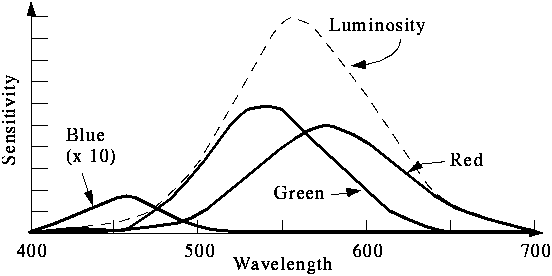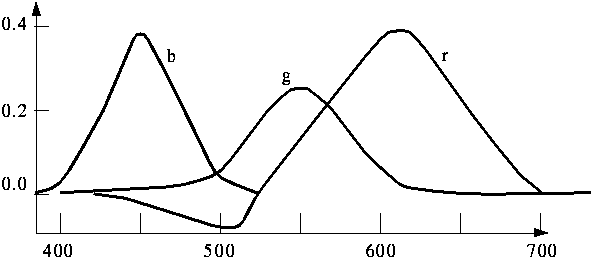
Cones and Luminous-efficiency Function of the Human Eye




where E is the light and S are the sensitivity functions.

Cones and Luminous-efficiency Function of the Human Eye




where E is the light and S are the sensitivity functions.

Wavelengths of the Visible Spectrum